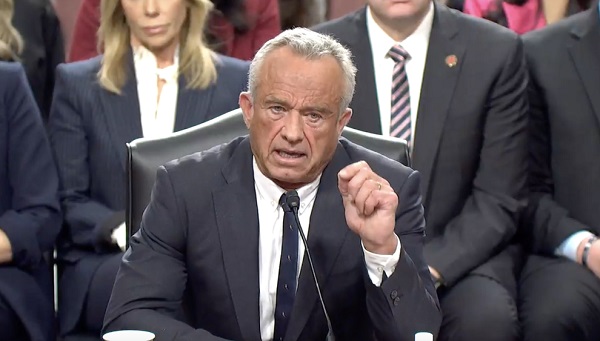Alberta
Former Chief Judge of Manitoba Proincial Court will lead investigation into AHS procurement process

Deputy Minister of Jobs, Economy and Trade Christopher McPherson has issued the following statement on an independent third-party investigation into procurement and contracting processes used by the Government of Alberta and Alberta Health Services (AHS):
Deputy Minister of Jobs, Economy and Trade Christopher McPherson has issued the following statement on an independent third-party investigation into procurement and contracting processes used by the Government of Alberta and Alberta Health Services (AHS):
“While serving as Acting Deputy Minister of Executive Council, Premier Danielle Smith asked me to establish a credible, independent, third-party investigation into the procurement processes used by the Government of Alberta and AHS and their outcomes.
“I have informed Premier Smith that the Honourable Raymond E. Wyant, former Chief Judge of the Provincial Court of Manitoba, will lead this investigation. I asked Premier Smith to issue a ministerial order to facilitate his work and she has done so. Judge Wyant’s work on this matter begins immediately.
“Judge Wyant was appointed to the Manitoba bench in 1998 before becoming Chief Judge in 2002. Prior to his service on the bench, Judge Wyant worked as a criminal defence lawyer and Crown attorney and was acting deputy director of Manitoba prosecutions at the time of his appointment to the Bench. He has also taught law for many years at Robson Hall at the University of Manitoba.
“Judge Wyant will review the relevant legislation, regulations and policies related to procurement typically used by Government of Alberta departments and agencies, specifically AHS, and their application to the procurement of pharmaceuticals and to services offered by chartered surgical facilities. Questions that Judge Wyant will consider are outlined in the attached terms of reference, and include whether or not any elected official, Government of Alberta or AHS employee, or other individuals, acted improperly during the procurement processes. Judge Wyant will make recommendations to the government for improvement or further action as appropriate.
“Appointed under the Government Organization Act, Judge Wyant will operate independently of government. The Government of Alberta will provide Judge Wyant with access to all relevant documents held by its departments and AHS, as well as facilitate interviews with relevant individuals.
“Judge Wyant has been given a budget of $500,000 to undertake this important work, including to retain legal and audit assistance at his discretion. He is being paid $31,900 per month, which is the same remuneration rate as the Chief Justice of the Alberta Court of Justice.
“To ensure additional independence, Service Alberta and Red Tape Reduction will hold the budget for this third-party investigation.
“Judge Wyant will deliver an interim written report by May 30, 2025. A final written report and recommendations will be delivered by June 30, 2025, and it will be posted on alberta.ca.”
Related information
Alberta
Alberta Precipitation Update

Below are my updated charts through April 2025 along with the cumulative data starting in October 2024. As you can see, central and southern Alberta are trending quite dry, while the north appears to be faring much better. However, even there, the devil is in the details. For instance, in Grande Prairie the overall precipitation level appears to be “normal”, yet in April it was bone dry and talking with someone who was recently there, they described it as a dust bowl. In short, some rainfall would be helpful. These next 3 months are fairly critical.
Thanks for reading William’s Substack!
Subscribe for free to receive new posts and support my work.
Alberta
Alberta’s move to ‘activity-based funding’ will improve health care despite naysayer claims

From the Fraser Institute
After the Smith government recently announced its shift to a new approach for funding hospitals, known as “activity-based funding” (ABF), defenders of the status quo in Alberta were quick to argue ABF will not improve health care in the province. Their claims are simply incorrect. In reality, based on the experiences of other better-performing universal health-care systems, ABF will help reduce wait times for Alberta patients and provide better value-for-money for taxpayers.
First, it’s important to understand Alberta is not breaking new ground with this approach. Other developed countries shifted to the ABF model starting in the early 1990s.
Indeed, after years of paying their hospitals a lump-sum annual budget for surgical care (like Alberta currently), other countries with universal health care recognized this form of payment encouraged hospitals to deliver fewer services by turning each patient into a cost to be minimized. The shift to ABF, which compensates hospitals for the actual services they provide, flips the script—hospitals in these countries now see patients as a source of revenue.
In fact, in many universal health-care countries, these reforms began so long ago that some are now on their second or even third generation of ABF, incorporating further innovations to encourage an even greater focus on quality.
For example, in Sweden in the early 1990s, counties that embraced ABF enjoyed a potential cost savings of 13 per cent over non-reforming counties that stuck with budgets. In Stockholm, one study measured an 11 per cent increase in hospital activity overall alongside a 1 per cent decrease in costs following the introduction of ABF. Moreover, according to the study, ABF did not reduce access for older patients or patients with more complex conditions. In England, the shift to ABF in the early to mid-2000s helped increase hospital activity and reduce the cost of care per patient, also without negatively affecting quality of care.
Multi-national studies on the shift to ABF have repeatedly shown increases in the volume of care provided, reduced costs per admission, and (perhaps most importantly for Albertans) shorter wait times. Studies have also shown ABF may lead to improved quality and access to advanced medical technology for patients.
Clearly, the naysayers who claim that ABF is some sort of new or untested reform, or that Albertans are heading down an unknown path with unmanageable and unexpected risks, are at the very least uninformed.
And what of those theoretical drawbacks?
Some critics claim that ABF may encourage faster discharges of patients to reduce costs. But they fail to note this theoretical drawback also exists under the current system where discharging higher-cost patients earlier can reduce the drain on hospital budgets. And crucially, other countries have implemented policies to prevent these types of theoretical drawbacks under ABF, which can inform Alberta’s approach from the start.
Critics also argue that competition between private clinics, or even between clinics and hospitals, is somehow a bad thing. But all of the developed world’s top performing universal health-care systems, with the best outcomes and shortest wait times, include a blend of both public and private care. No one has done it with the naysayers’ fixation on government provision.
And finally, some critics claim that, under ABF, private clinics will simply focus on less-complex procedures for less-complex patients to achieve greater profit, leaving public hospitals to perform more complex and thus costly surgeries. But in fact, private clinics alleviate pressure on the public system, allowing hospitals to dedicate their sophisticated resources to complex cases. To be sure, the government must ensure that complex procedures—no matter where they are performed—must always receive appropriate levels of funding and similarly that less-complex procedures are also appropriately funded. But again, the vast and lengthy experience with ABF in other universal health-care countries can help inform Alberta’s approach, which could then serve as an example for other provinces.
Alberta’s health-care system simply does not deliver for patients, with its painfully long wait times and poor access to physicians and services—despite its massive price tag. With its planned shift to activity-based funding, the province has embarked on a path to better health care, despite any false claims from the naysayers. Now it’s crucial for the Smith government to learn from the experiences of others and get this critical reform right.
-

 Autism2 days ago
Autism2 days agoNIH, CMS partner on autism research
-

 Economy2 days ago
Economy2 days agoCanada’s Energy Wealth Is Bleeding South
-

 Business1 day ago
Business1 day agoTrump announces UK will fast-track American products under new deal
-

 espionage1 day ago
espionage1 day agoHong Kong Police Detain Relatives of Canadian Candidate Targeted by Beijing Election Interference
-

 Alberta2 days ago
Alberta2 days agoAlberta’s move to ‘activity-based funding’ will improve health care despite naysayer claims
-

 COVID-1921 hours ago
COVID-1921 hours agoCanada’s top doctor signed oath to withhold COVID info that could ‘embarrass’ Trudeau’s cabinet: records
-

 International1 day ago
International1 day agoCardinals elect Robert Francis Prevost, first American pope to lead Catholic church
-

 Energy1 day ago
Energy1 day agoOntario Leads the G7 by Building First Small Modular Reactor








